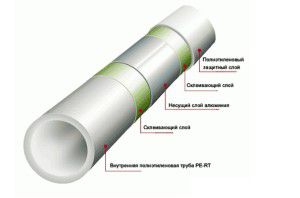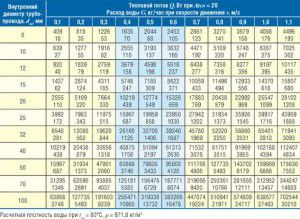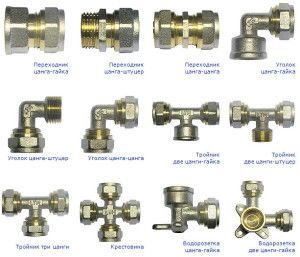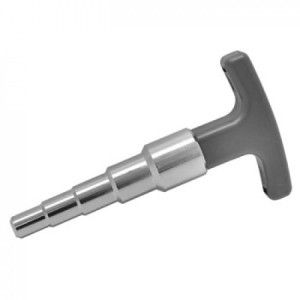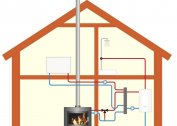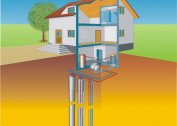Properly selected material for the manufacture of pipes for the organization of heating is the basis for the efficiency of the entire system. Until recently, there was no particular alternative - it was necessary to install steel lines. However, with the development of the polymer industry, it became important to do heating with pipes made of metal-plastic of a private house with their own hands.
Features of plastic for heating
The main operational qualities for heating pipes are a long service life with periodic temperature fluctuations, as well as minimal heat loss. These parameters are fully met by heating on pipes made of metal-plastic. A distinctive feature of these designs is the use of several materials of various nature and properties to achieve the desired result.
The main fabrication material is often high-density crosslinked polyethylene. But besides it, simple polyethylene or propylene can be used. To prevent oxygen molecules from entering the coolant, the pipe has a foil layer. They are bonded to the outer and inner polymer shell using an adhesive layer. This is a prerequisite, since it is impossible to make effective heating from metalplastic with your own hands from highways without a waterproof shell. Otherwise, oversaturation of water with oxygen will lead to an increased corrosion rate of the metal elements of the system.
For the consumer, it is not the technical but the operational properties of the heating pipes that are important. Therefore, we will not consider manufacturing technology in detail, but focus on special aspects of metal plastic:
- What is better to take - cross-linked polyethylene for heating or metal-plastic? The latter has a different degree of thermal expansion of its elements - polymer shells and foil layer. Therefore, on long sections of the pipeline installation of compensation loops is needed;
- The temperature mode of operation is limited to 95 ° C. Exceeding this value will lead to deformation of the structure;
- To connect the elements of the line, you can use several types of fittings - glued, threaded or clamped. If it is necessary to make reliable heating of a private house with metal-plastic - it is recommended to use the last type of connectors.
What else is the difference when choosing - metal or polypropylene for heating? Easy installation first. To connect the nozzles from polypropylene, a special welding machine is required. Plastic pipes are mounted using a pipe "gas" key. But the requirements for the professionalism of their installation are much higher. The reliability of the heating will depend on the degree of effort, the correct cut and drawing up a heating circuit.
The plastic pipe can be bent to a radius of 12 mm. This applies to models with a diameter of 20 mm or less. As the cross section increases, the minimum bending radius increases. This must be taken into account during installation.
The choice of pipes and accessories for the heating system
To organize heating from metal-plastic with your own hands, you need to choose the right pipes and accessories. First of all, the optimal diameter is determined - the system capacity will depend on it.
Plastic pipes
What is more convenient for heating installation - metal-plastic or polypropylene? Metal-plastic pipes are delivered in bays, the length of which is from 50 to 200 m. Polypropylene products are made up to 6 m long. Also, when choosing a material for the manufacture of heating from plastic pipes, it is necessary to take into account their quality, namely:
- The minimum thickness of the foil shell should be 0.3 mm;
- The connection of the aluminum layer should be carried out using seamless technology;
- There should be no delamination at the pipe section.
Be sure to make sure that there are no bends in the bay. This may affect the integrity of the aluminum shell.
Pipes differ from Rehau, Oventrop and Henko in a high degree of reliability. In the assortment of their products, you can choose fittings and other additional components for the highway.
Fittings for plastic pipes
For connection, it is best to use press fittings. They have the same design regardless of what was chosen - cross-linked polyethylene for heating or similar metal plastic.
The best performance features have models with a double seal circuit. They are made of stainless steel and copper alloy (brass). The latter are characterized by a more affordable cost, but have a shorter repair life.
An important factor in organizing the heating of a private house with metal-plastic is the cost of components. This parameter directly depends on the manufacturer, as well as the technical characteristics of the elements.
| Name | price, rub. |
| 16 mm pipe | 16,7 |
| 20 mm pipe | 22,61 |
| 26 mm pipe | 42,77 |
| Coupling, 20mm | 91 |
| Connection tee, 20 mm | 67,3 |
| Crosspiece, 20 mm | 129,8 |
If the main parameter for choosing metal-plastic or polypropylene for the heating system is the cost of components, then the first one will “lose”. This is due to the large labor costs in the production.
The marking must indicate that the product can be used in heating systems. Not all metal pipes are designed for high temperatures.
Installation of heating from plastic pipes
To install metal-plastic heating on your own, you need to purchase special scissors for trimming and a calibrator. It is designed to align the end of the pipe before installation in the clamping fitting. It is not difficult to make it with your own hands, but at the same time there is a high probability of a mistake in size - the permissible deviation is 0.5 mm.
After the acquisition, the pipes must lie in a room with a normal temperature (from 15 to 25 ° C) for at least 1 day. If you need to bend the trunk in a certain area - a special spring is purchased.
Having cut the pipe to the desired size, you should clean its end. Then the fitting is mounted and clamped with a pipe wrench. The force should be relatively small so as not to damage the fitting body. For fastening to a wall or floor, you need to use special clips.
Another difference between cross-linked polyethylene for heating and metal-plastic is the mandatory check of the connecting nodes before starting the heating system. With pressure surges, they can lose their tightness or even collapse.
In the video material, you can get acquainted with the recommendations for installing metal-plastic pipes:
